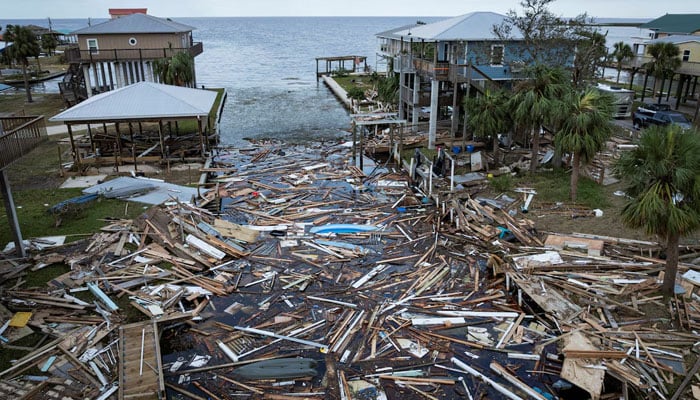The United States is anticipated to experience a more robust and perilous hurricane season this year, with an increased likelihood of powerful storms making landfall. However, precisely as this risk escalates, the Trump administration is implementing job cuts and funding reductions at the nation’s primary weather and climate agency – the US National Oceanic and Atmospheric Administration (NOAA). Experts are cautioning that these cutbacks could impede the ability to effectively track storms and ensure timely public safety.
On Thursday, NOAA issued a forecast predicting a more intense Atlantic hurricane season for the current year. NOAA estimates a 60 percent probability of an above-normal season, projecting between 13 to 19 named storms with sustained winds of 39 mph (63 kph) or greater. Among these, six to 10 are expected to intensify into hurricanes with winds of 74 mph or higher, including three to five major hurricanes classified as categories three, four, or five, with sustained winds of at least 111 mph. The agency also indicated a 30 percent chance of a near-normal season and a 10 percent chance of a below-normal season.
The administration is also reportedly seeking to dismantle the Federal Emergency Management Agency (FEMA), advocating for its closure and the transfer of its responsibilities to individual states. FEMA’s acting head, Cameron Hamilton – an appointee of the Trump administration – was dismissed earlier this month after stating that eliminating the agency was not “in the best interests of the American people.”
Warming Oceans and Decreased Preparedness
The forecast attributes the heightened activity to a convergence of factors: neutral conditions in the El Niño–Southern Oscillation (ENSO) climate pattern, warmer-than-average ocean temperatures, predictions of weak wind shear, and increased activity from the West African Monsoon, which serves as the genesis point for Atlantic hurricanes.
“As we witnessed last year with significant inland flooding from hurricanes Helene and Debby, the impacts of hurricanes can reach far beyond coastal communities,” stated Acting NOAA Administrator Laura Grimm in a press release. “NOAA is critical for the delivery of early and accurate forecasts and warnings, and provides the scientific expertise needed to save lives and property.”
However, Rick Spinrad, the former NOAA administrator, conveyed profound concerns to AFP regarding the agency’s capacity to respond following widespread layoffs of meteorologists, technicians, and other essential personnel. These reductions, he noted, were spearheaded by Elon Musk’s proposed “Department of Government Efficiency.” Spinrad expressed his apprehension: “I worry about the ability to fly the aircraft, run the models, answer the phones as these storms start bearing down on the country – at the same time that the Weather Service is going to have to be dealing with tornadoes, wildfires, floods, extreme precipitation.”
Spinrad further added that seawater temperatures have been consistently rising for decades due to the burning of fossil fuels. “So it’s not a surprise, and undoubtedly, climate change has contributed to some of the ocean temperatures that are a major factor in this forecast.”
President Donald Trump is seeking to cut NOAA’s research operations budget by $1.3 billion next year. Project 2025 – the conservative blueprint guiding the administration’s second-term agenda – has labeled the agency a primary driver of “climate alarmism.”
According to NOAA, last year, five storms that were significant enough to be named caused economic losses exceeding a billion dollars when adjusted for inflation. The deadliest among these was Helene, which was responsible for 250 US fatalities – the highest death toll since Hurricane Katrina in 2005. The Trump administration announced earlier this month that it would cease updating its billion-dollar disaster database, a resource that for 44 years had illustrated the escalating costs of climate destabilization.



